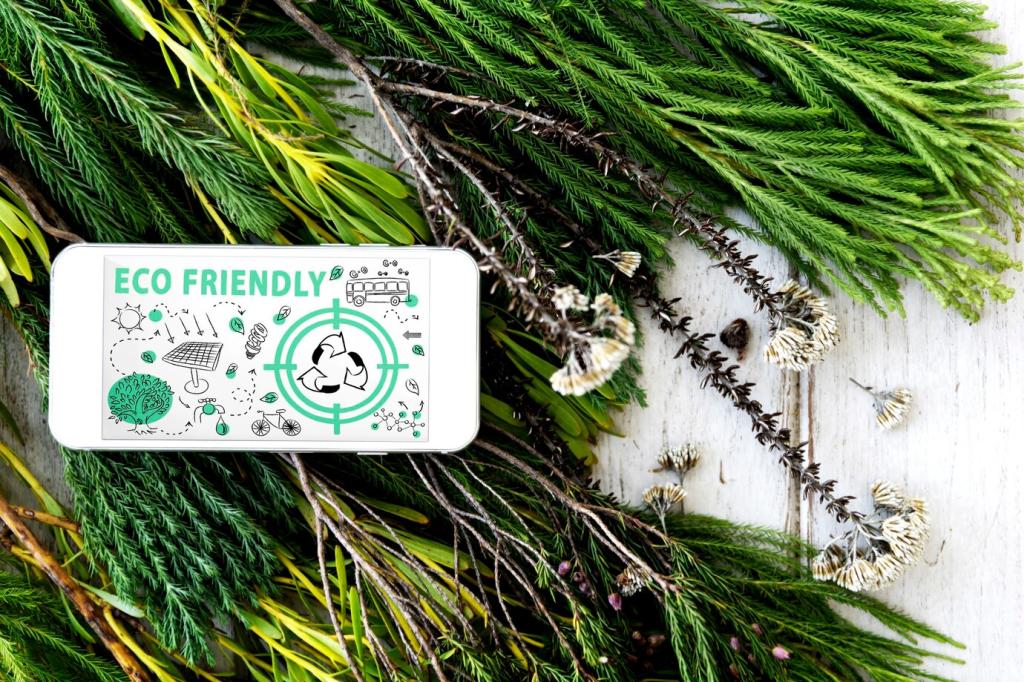
Eco-Friendly Furniture Care Solutions
Welcome to our comprehensive guide to eco-friendly furniture care solutions. In a world where sustainable choices are increasingly crucial, maintaining your furniture in a way that honors both its craftsmanship and the environment is more important than ever. This page aims to provide insightful, responsible, and practical advice for anyone looking to preserve the beauty and longevity of their furniture while minimizing their ecological footprint.
Sustainable wood, such as bamboo, reclaimed wood, or FSC-certified hardwoods, is a popular option for environmentally conscious homes. These materials are harvested with meticulous attention to forest preservation and renewal. When caring for sustainable wood, it’s essential to select gentle, plant-based cleaning options to avoid stripping natural finishes or introducing harmful chemicals into the environment. Additionally, using grain-friendly, non-abrasive cloths helps maintain the wood’s appearance while protecting the fibers. Frequent, delicate cleaning prevents dust and grime buildup, ensuring your piece remains both beautiful and eco-friendly.
Understanding Eco-Friendly Materials
Vinegar for Versatility
White vinegar is a staple in eco-friendly cleaning due to its natural acidity and ability to remove grime without leaving harsh residues. When diluted with water, it makes an excellent cleaner for glass and unfinished wood surfaces. Despite its strong scent, which dissipates quickly, vinegar breaks down stains and neutralizes odors naturally. The key is moderation; using too much can strip finishes or leave behind an unwanted aroma. Always test a small area first, then enjoy a residue-free and chemical-free sparkle.
Baking Soda for Gentle Abrasion
Baking soda’s gentle abrasive qualities make it perfect for tackling tough stains without risking damage to the delicate surfaces of eco-friendly furniture. Whether sprinkled on fabric and vacuumed up or mixed into a paste for deeper cleans, baking soda draws out dirt and neutralizes odors without resorting to synthetic fragrances. Its mildness means you can use it repeatedly without worrying about harming furniture finishes or fibers, contributing to both effective cleaning and thoughtful sustainability.
Essential Oils for Freshness
Essential oils, when used sparingly and properly diluted, are a natural way to add fragrance and extra cleaning power to your eco-friendly toolkit. Oils like lavender, lemon, or tea tree offer antimicrobial benefits, which help eliminate germs and bacteria on hard and soft surfaces alike. However, proper application is crucial; essential oils can be strong and should never be used in their undiluted form. Infusing cleaning water with a few drops brings a gentle, lasting scent and an extra layer of protection, making your home healthier and more inviting.
Preventive Care for Endless Longevity

Prolonged exposure to sunlight can fade fabrics and dry out wood, causing splitting or discoloration over time. By positioning furniture away from direct sunbeams, using curtains or UV-filtering films, and rotating pieces periodically, you protect the integrity of materials. Regularly applying plant-based wood conditioners can also mitigate the effects of sun damage, preserving natural color and luster. These consistent, low-effort strategies keep your furnishings vibrant and environmentally sound for countless years.
DIY Furniture Care Products
Homemade Wood Polishes
You can revitalize your wood furniture with a simple polish made from olive oil and lemon juice. This combination cleans, nourishes, and restores shine without synthetic silicones or petroleum derivatives. Gently apply with a soft cloth in the direction of the wood grain, taking care not to over-saturate the surface. The natural oils penetrate the pores, adding moisture while the lemon offers antibacterial properties and a subtle, fresh scent. Such polishes are suitable for regular application, especially on vintage or heirloom pieces.
Natural Fabric Fresheners
Conventional fabric deodorizers often rely on artificial fragrances and aerosol propellants. Instead, create your own freshener by combining distilled water, a small amount of witch hazel, and a few drops of essential oil in a reusable spray bottle. Lightly mist onto cushions or curtains, allowing the solution to air-dry. This method gently neutralizes everyday odors without masking them with heavy perfumes. Plus, it is safe for use in homes with children and pets, making it a mindful choice for your furniture and the living environment.
Eco-Friendly Stain Removers
Accidents happen, but you don’t need a shelf full of harsh products to fight back. A mixture of baking soda, Castile soap, and water forms a gentle yet powerful paste for treating everything from coffee spills to ink marks. Apply it directly onto the stain, let it sit briefly, then gently blot away with a clean, damp cloth. This approach not only lifts out particulates without damaging fabrics or frames, but also avoids the toxins found in many commercial spot treatments.

Indoor Air Quality and Furniture Care
Avoiding Volatile Organic Compounds
Many standard furniture polishes, paints, and cleaners emit VOCs, contributing to indoor air pollution. Prolonged exposure to these chemicals can cause headaches, respiratory issues, and other long-term health effects. By selecting low- or zero-VOC care products and allowing for proper air exchange during and after cleaning, you safeguard the comfort and safety of your home. Take special care in enclosed spaces where air tends to stagnate, as this is where VOC concentrations can rise most quickly.
Benefits of Houseplants
Houseplants do more than add visual appeal—they naturally filter toxins from the air, including those occasionally released from furniture materials or finishes. Choose varieties known for air purification, such as snake plants or peace lilies, and position them near your most-used furniture. In addition to their filtering capabilities, these plants raise humidity, lower dust accumulation, and bring a touch of the outdoors inside, creating a healthier and more harmonious living environment.
Gentle Dust Removal
Frequent dusting is vital for both aesthetics and respiratory health. Micro-particles settling on surfaces can aggravate allergies and harbor chemicals released by less eco-friendly furnishings. Use damp, reusable microfiber cloths to trap dust without redistributing it. Avoid dry sweeping, which can simply launch particles into the air. With regular, gentle cleaning, you promote both the longevity of your furniture and a purer, more pleasant indoor atmosphere.
Prolonging Furniture Life Through Conscious Use
Be deliberate about where and how you place your furniture. Avoid high-traffic areas that could lead to unnecessary wear or accidental bumps. When moving furniture, lift instead of dragging to prevent structural stress or abrasion to floors and feet. Additionally, keep pieces out of moisture-prone spaces unless designed for such use. These minor adjustments reduce the likelihood of damage, thereby prolonging functional life and minimizing the frequency of repairs or replacements.
